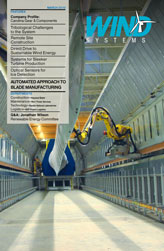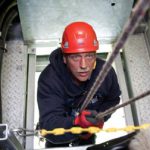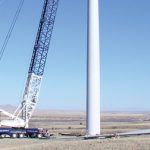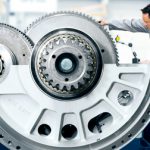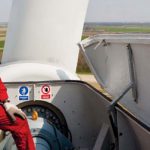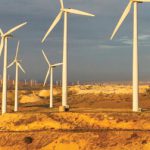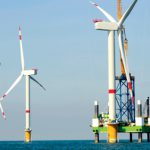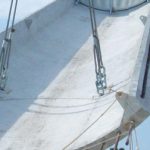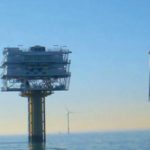Not since the revolution in aerospace manufacturing has the need for lean solutions that combine composite fabrication and large-part machining been so critical to an industry’s advancement as it is now for wind energy. Like aerospace, the solutions require breakthrough automation technologies that enable lean, repeatable mass production of large composite and metal components. Fortunately, the foundation for a rapid evolution of manufacturing technology for wind power components was created by the experience of the aerospace industry, and it is already producing results. Aerospace providers have developed automation solutions for parts from blade tip to output shaft, including Rapid Material Placement and quick-cure mold systems for blades that combine to reduce composite lay-up, infusion, and curing time by 50 percent. And an array of new multitasking machine tools for super-sized metal components can, in many cases, produce completed parts in a single setup, minimizing dangerous part handling and improving part accuracy.
Massive Manufacturing
The imperatives driving wind turbine engineering and manufacturing are in many ways analogous to those of aerospace. The parts are massive, ever lighter, stronger, engineered for safety and reliability, and made with advanced metals and composites. The scale of the parts is generally increasing, while a drive for weight reduction is always pushing those parts to their engineering limits.
On the manufacturing side there’s a need to automate with improved process control, repeatability, and process capability, while working with evolving composites and large metal components. Aerospace and other sectors of the energy industry have met this challenge with game-changing manufacturing technologies in composites and metalworking. In composites, automated tape layers and fiber-placement systems revolutionized the manufacture of large aerostructures. In metalworking, purpose-designed aerospace machine tools with multiple spindles addressed the need to produce multiple large parts in a single setup, working with aluminum or the toughest titanium.
The critical mass to support similar developments for the wind-power components has been building, and new purpose-designed technology was rolled out at WINDPOWER 2009 in Chicago. New composite technologies are tailored to the cost requirements of the wind industry—which are quite different from aerospace—and flexible enough for use with glass, the dominant material, and carbon fiber. One of the most innovative is a systematized approach consisting of a Rapid Material Placement System (RMPS), combined with a patent-pending quick-cure molding system. Together they can reduce lay-up, infusion, and curing time by 50 percent.
For metal components, the principal thrust in wind power is large-part multitasking capability—the ability to complete more metalcutting operations on one machine, or completely finish a raw part on one machine. These manufacturing technologies bring distinct advantages to wind power components, chiefly lower cost, higher performance, and lower warranty/ownership costs due to lighter, stronger components produced to tighter tolerances, and with the repeatability only automation can deliver.
Automated Fabrication
Rapid Material Placement technology brings an integrated approach to what has largely been a manual or piecemeal-automated process. A system like this is capable of spraying in-mold coatings, dispensing/lay-up of glass and carbon fiber materials, and dispensing/application of adhesive. It brings 3 m/sec (10 ft/sec) lay-up speed to placement of materials in blade skin, spar cap, and sheer web molds, with laser- and vision-based wrinkle detection in cross or longitudinal directions. Depending on the laminate schedule, this type of system can reduce lay-up time 85 percent on a 45-meter blade.
Programmed off line, the CNC-controlled machine uses a gantry system with multi-axis end effectors capable of manipulating spray heads and adhesive applicators, as well as tooling for spooling and placing materials. Two such systems adjacent to one another can each produce a 45-meter blade-shell half in less than two hours, with half the manual labor. The gantry system rides on rails that are flush with the floor, and carries bulk supply systems for gel-coat and adhesive.
After application of gel-coat with spray-head tooling, a ply-generator with a 10-roll magazine of material cuts and dispenses plies to a lay-up end effector on the gantry. The lay-up end effector spools up the material supplied by the stationary ply generator. As the fabric is paid out onto the mold, a pair of articulating, powered brushes smoothes it to the tool surface. The lay-up system is mechanically repeatable to ±2 mm, with application tolerance of ±5 mm.
Off-line programming software supplied with the system creates the CNC code from imported CAD data. The same software can program a related five-axis machining system for root drilling/milling/sawing.
New quick-cure mold technology uses specialized tooling built to the customer’s specs. The molds are produced using the customer’s CAD data. The system yields a finished blade to spec with each cycle. It can be infused with resin in an hour, followed by a two-hour cure, about half the normal time. Like the lay-up system, the infusion/curing system includes process control metrics for resin metering, temperatures, blocked channels, etc., with alarm limits. Other new blade fabrication technologies include a five-axis machining system for root drilling/milling/sawing.
Multitasking Metal Parts
Many of the main metal components of wind turbines start out as castings or forgings that can require hundreds of hours of precision machining. Part accuracies are as high, or higher, than those of aerospace parts. Machining challenges include tight tolerances, capacity/throughput, complex geometries, inline bore precision, parallelism between bores, bore concentricity, and precision mating surfaces.
Meeting these challenges on large parts is complicated by part weight and size. Great risk and time are involved when parts weighing up to 80,000 pounds are transferred from one machine to another to produce different features on different surfaces. Such transfers often degrade overall part accuracy, too, as tiny setup errors stack up each time the part is refixtured. Reducing part transfers, and the attendant increased WIP, is the essence of lean manufacturing. It’s all about one-stop processing, and it’s accomplished with multitasking machine tools: machines the integrate normally dissimilar operations, such as milling, turning, drilling, tapping, perimeter scalloping, boring, hobbing, and grinding.
Four primary metal-cutting machines for massive wind turbine components—horizontal boring mills, vertical turning centers, horizontal or universal machining centers, and horizontal turning centers—are increasing their multitasking capabilities to meet the needs of the wind industry. Key components produced on these machines include rotors/shafts, gear case assemblies, planetary carriers, hubs, rotor bearings, couplings, pinions, cylinder brackets, yaw beams, and rotary crowns.
New developments in horizontal turning machines—for rotor shafts, pinions, and similar shaft-style parts—combine a wide array of unusual capabilities for finishing a large part in one setup. These horizontal turning centers (HTCs) perform operations unheard of on a typical HTC: deep-hole drilling, serrating, grinding, hard turning, notch milling, and hobbing, as well as cut-to-length and centering, rough, and finish turning. European wind industry leaders are already using these machines to produce parts up to 1500 mm diameter and 2800 mm long.
Horizontal boring mills (HBMs), used to process gear case assemblies, planetary carriers and hubs, are increasing their one-stop processing capabilities with contouring heads and programmable boring bars, which reduce the number of tools (and tool changes/time/cost) need to complete a part. One tool can bore multiple diameters and produce complex part geometries. A contouring head combined with a programmable boring bar can perform nine to 10 different operations (atypical for a boring mill) on a part, including threading, grooving, turning, contouring, taper turning and others, internally and externally. Right-angle heads and precision rotary tables add capabilities for five-sided part processing in a single setup.
Vertical turning centers (VTCs) for production of bearing rings and planetaries normally apply a stationary tool on the end of a movable ram, but automatically interchangeable powered heads allow VTCs to add capabilities for drilling, milling, tapping, and similar operations with live tooling, all in one setup. The addition of a full-contouring 360,000-position C-axis table now enables drilling or mill turning of features anywhere on the workpiece. Turret heads provide excellent productivity on parts that don’t require a lot of reach into the part. Vertical turning centers handle parts up to 4700 mm (185 in) diameter or larger.
The Universal Machining Center (UMC) is what its name implies: a machine that can approach a part from a horizontal or vertical orientation. Designed for large, complex-geometry parts, the UMC allows five-axis/five-side machining, with automatically interchangeable heads for faster processing and reduced work-in-process. With a spindle ram mounted on a crossrail, this machine can have a rail or moving-bed design. A rail design allows the machine to have multiple work zones under the spindle, so operators can load and unload parts while the machine continues operations in other work zones. Another new machining concept places a torque table in the work zone of a UMC to enable the machine to do turning work with fixed tooling. This effectively adds vertical turning capabilities to a machining center.
Horizontal machining centers are a mainstay of prismatic parts manufacturing, and the machines are growing in size, speed and multitasking capability to meet needs in wind energy manufacturing. Twin-pallet machines for wind parts typically have a table size of 1250 x 1600 mm and accept parts weighing up to 7000 kg (15,400 pounds). Twin pallets and quick work change ensure high production rates, while robust, cast-iron construction and oversized ballscrews provide muscle and traverse speed to process large parts in volume.
A Strong Start
Dowding Industries entered wind energy manufacturing last year, following a methodical plan. It focused on uptime and commonality of controls. A family-owned company, in 2006 Dowding began looking for opportunities to grow while avoiding the region’s industrial downturn. Already a manufacturer of fabricated and machined components for a wide range of industries, it was particularly attracted to the potential for wind turbines and alternative energy, according to Jeff Metts, president. “We saw an opportunity to be part of the ‘new energy’ solution,” he says.
To help in understanding the business potential before investing, Dowding enlisted the assistance its primary supplier of machining systems, a company with an excellent track record at Dowding. “Our critical success factors were uptime and common controls,” Metts says. “Solid OEM service plays a big role in uptime for large machines, and homogenous controls allow us to be ambidextrous within our machine capability and simplify our training.”
The machinery supplier provided extensive application and time studies, based on wind generator part prints provided by Dowding. “The detail and thoroughness of the reports were overwhelming,” he says. “The studies included machine recommendations, fixturing, set-ups, tooling, cycle times, and earnings per hour. We addressed the risks and unknowns, giving us the comfort level as newcomers to large-part machining to make such a major commitment.”
Dowding ultimately purchased three massive machining systems in 2008, and Governor Jennifer Granholm helped dedicate the new 35,000 square-foot facility for production of turbine components and large, critical parts for other big-machine makers. “All these machines are built right here,” Metts says. “That is another important factor for us. We were convinced our success would be found here in the United States.”
The recent stimulus-driven, three-year extension of the production tax credit for renewable energy investment should help ensure Dowding’s success, as well as that of other manufacturing entrepreneurs.



















